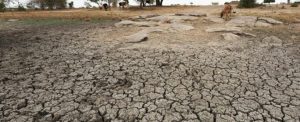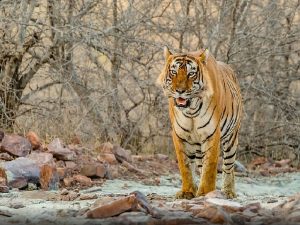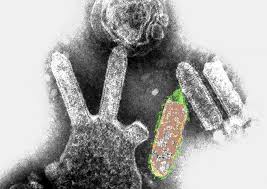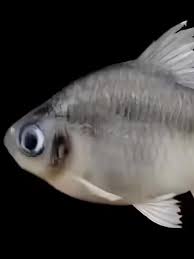Today’s Current Affairs: 7th July 2025 for UPSC IAS exams, State PSC exams, SSC CGL, State SSC, RRB, Railways, Banking Exam & IBPS, etc
Table of Contents
AIR LORA:

The Indian Air Force (IAF) is reportedly considering the acquisition of AIR LORA, an advanced air-launched ballistic missile, to significantly bolster its long range strike capabilities.
- AIR LORA is an advanced air-launched ballistic missile developed by Israel Aerospace Industries (IAI).
- It is a short-range air-to-ground missile (AGM) developed for strike missions against high-value and well-protected targets such as command centres, air force bases, infrastructure, and naval vessels in dense littoral environments.
- It has a diameter of 0.624 m and a length of 5.2 m, with a launch weight of approximately 1,600 kg.
- It can carry a payload of up to 600 kg, and can deploy a single high explosive (HE) warhead or submunitions.
- It is a fire-and-forget missile system that functions autonomously after launch.
- It does not require guidance from the aircraft once it is released.
- The missile can also change its target coordinates mid-flight, allowing adjustments during changing battlefield scenarios.
- It features high survivability with advanced immune INS/GNSS navigation and strong anti-jamming capabilities, allowing for 24/7 operation in extreme weather conditions and highly contested battlefields.
- It has a maximum range of 400 km.
- It can be simply integrated into airborne platforms as a stand-alone configuration or through the avionics system” and is easy to operate, “with simple fire-and-forget and autonomous operation.
- It has a very high mission success rate, mainly due to its supersonic speed and its combat-proven GNSS anti-jamming system”, as well as terminal trajectory shaping and a 90° attack angle.
National Commission for Minorities: In News

The National Commission for Minorities (NCM), set up with the vision to safeguard and protect the interests of minority communities in India, is awaiting the appointment of a head and members since the retirement in April 2025 of its previous Chairperson and members.
- National Commission for Minorities (NCM) is a statutory body under the Ministry of Minority Affairs.
- In January 1978, the government set up the Minorities Commission to safeguard the interests of minorities.
- With the enactment of the National Commission for Minorities Act, 1992, the Minorities Commission became a statutory body and was renamed as the National Commission for Minorities.
- It is entrusted with the responsibility to safeguard the interests of the minority communities in India. Besides the role, the Commission is also to undertake confidence-building measures in light of the new and emerging challenges.
- NCM is responsible for advising the central and state governments on matters related to the welfare and development of minority communities in India.
- Initially, five religious communities-Muslims, Christians, Sikhs, Buddhists, and Zoroastrians (Parsis)-were notified as minority communities by the Union Government.
- Further, with the 2014 notification, Jains were also notified as another minority community.
- As per the 2011 Census, the six religious minority communities constitute around 20% of the country’s population.
- The commission consists of a chairperson, a vice chairperson, and five members to be nominated by the central government from amongst persons of eminence, ability, and integrity.
- The members, including the chairperson, are required to be from amongst the minority communities.
- In accordance with Section 4(1) of the NCM Act, 1992, each member, including the chairperson, holds office for a period of three years from the date of assumption of office.
- The main functions of the Commission are:
- Evaluate the progress of the development of minorities under the Union and states.
- Monitor the working of the safeguards for minorities provided in the Constitution and in laws enacted by Parliament and the state legislatures.
- Make recommendations for the effective implementation of safeguards for the protection of the interests of minorities by the central government or state governments.
- Look into specific complaints regarding deprivation of rights and safeguards of the minorities and take up such matters with the appropriate authorities.
- Cause studies to be undertaken into the problems arising out of any discrimination against minorities and recommend measures for their removal.
- Conduct studies, research, and analysis on the issues relating to the socio-economic and educational development of minorities.
- Suggest appropriate measures in respect of any minority to be undertaken by the central government or state government.
- Make periodical or special reports to the central government on any matter pertaining to minorities and, in particular, difficulties confronted by them.
- Any other matter which may be referred to by the central government.
Atomic Energy Regulatory Board:

India’s nuclear regulator, the Atomic Energy Regulatory Board (AERB), recently granted operation licence for two indigenously developed 700 MWe Pressurised Heavy Water Reactors at the Kakrapar Atomic Power Station (KAPS) in Gujarat.
- AERB stands as India’s premier regulatory authority for nuclear and radiation safety.
- The AERB was constituted on November 15, 1983, by the President of India by exercising the powers conferred by the Atomic Energy Act, 1962 to carry out certain regulatory and safety functions under the Act.
- The regulatory authority of AERB is derived from the rules and notifications promulgated under the Atomic Energy Act and the Environment (Protection) Act, 1986.
- The Mission of the AERB is to ensure the use of ionizing radiation and nuclear energy in India does not cause undue risk to the health of people and the environment.
- The AERB shall have authority to administer the provisions of the Factories Act, 1948, the industrial safety for the units of Department of Atomic Energy (DAE) as per Section 23 of the Atomic Energy Act,1962.
- Its headquarters is situated in Mumbai.
- The Board comprises six members of which two are whole time members including the chairman.
- The other whole-time member is the executive director of the AERB Secretariat who is an ex-officio member of the Board.
- The other four members are eminent experts from various disciplines relevant to the mandate of the board.
- The executive functions of the AERB shall be vested in Chairman,
- The Board shall be responsible to the Atomic Energy Commission.
- Regional Regulatory Centres (RRCs) of AERB set up at Kolkata, Chennai and New Delhi carry out regular surveillance of the radiation facilities in eastern, southern and northern zones respectively.
- AERB has a Safety Research Institute (SRI) located at Kalpakkam, Tamil Nadu, which carries out research in safety related topics.
- AERB license is a mandatory certification for entities involved in the use of ionizing radiation and nuclear energy in India.
- This license ensures that such activities adhere to safety standards, minimizing risks to public health and the environment.
Drought Hotspots Around the World 2023-2025:

The UN Convention to Combat Desertification (UNCCD) and the U.S. National Drought Mitigation Centre released a Drought Hotspots Around the World 2023-2025 report highlighting intensifying drought hotspots between 2023–2025.
- Droughts have intensified across Africa, the Mediterranean, Latin America, and Asia — termed “slow-moving catastrophes.”
- Over 90 million people in Eastern and Southern Africa face acute hunger; maize crop losses in Zimbabwe crossed 70%.
- Zambezi River flow dropped to 20% of its long-term average, leading to 21-hour daily power blackouts and halted essential services.
- Two years of drought cut Spain’s olive oil output by 50%, triggering price surges across Europe.
- Drought reduced daily transits from 38 to 24 ships, disturbing global trade and food prices.
- Lowest water levels on record stranded communities, killed river dolphins, and exposed ecological vulnerability.
- Drought-linked poverty doubled child marriages in Ethiopia and caused mass school dropouts in Zimbabwe.
- Over 100 elephants died in Zimbabwe; 200+ river dolphins perished in the Amazon due to extreme heat and water scarcity.
India and Drought Hotspots: - India faces increasing intra-seasonal rainfall variability, worsening water security and crop yield uncertainties.
- As droughts reduce rice and sugar output in Asia, India sees rising pressure on food prices and inflation.
- River basins such as Godavari and Krishna face recurrent drought conditions due to over-extraction and mismanagement.
- Drought-prone states like Maharashtra, Rajasthan, and Karnataka experience farmer distress and migration pressures.
Satkosia Tiger Reserve:

The Odisha government recently floated a tender for the construction of a high-level bridge over the Mahanadi river near the ecologically sensitive Satkosia tiger reserve.
- It is located in the heartland of Odisha and spread over four districts, viz. Angul, Cuttack, Boudh, and Nayagarh.
- It comprises two adjoining sanctuaries, namely Baisipalli Sanctuary and Satkosia Gorge Sanctuary.
- It covers an area of 1136.70 sq.km, including a buffer of 440.26 sq.km.
- The area is also a part of the Mahanadi Elephant Reserve.
- Satkosia is the meeting point of two biogeographic regions of India: the Deccan Peninsula and the Eastern Ghats.
- The terrain is hilly with moderate to steep slopes and narrow valleys.
- The river Mahanadi flows through the valleys in the middle of the reserve.
- The average elevation of the terrain varies between 37 m and 932 m, with the lowest point being at Katrang and the highest point being at Sunakhania.
- The forest vegetation comprises North Indian tropical moist deciduous forests and Moist peninsular low-level sal.
- The main tree species is sal, which grows in gregarious formations.
- Other associate species are Asan (Terminalia alata), Dhaura (Anogeissus latifolia), Bamboo (Dendrocalamus strictus), and Simal (Bombax ceiba).
Fauna: - The flagship species among the fauna include tiger, leopard, elephant, spotted deer, sambar, chowsingha, barking deer, bison, wild dog, sloth bear, jackal, giant squirrel, and porcupine.
- It is the natural habitat of two endangered species, viz., the freshwater crocodile and the gharial.
Australian Bat Lyssavirus:

A death was reported due to Australian bat lyssavirus.
- Australian Bat Lyssavirus is a rare but deadly virus that can be transmitted from bats to humans through bites or scratches.
- It is closely related to the rabies virus and was first identified in 1996 in a fruit bat in northern New South Wales, Australia.
- The lyssavirus is a member of the Rhabdoviridae family, which also includes viruses that cause rabies.
- The virus has been discovered in flying foxes, fruit bats and insect-eating microbats throughout Australia.
- Human infection with bat lyssavirus occurs through direct contact with infected bat saliva via bites, scratches or open skin.
- It can also occur if our mucous membranes (eyes, nose, mouth) are exposed to bat saliva. There’s no risk associated with bat faeces, urine, blood, or casual proximity to roosts.
- The nature of the illness in humans mirrors rabies, beginning with flu-like symptoms (fever, headache, fatigue), then quickly progressing to severe neurological disease, including paralysis, delirium, convulsions, and loss of consciousness.
- Lyssavirus has no effective treatment once symptoms appear.
Pethia dibrugarhensis:

A team of scientists has discovered a new species of cyprinid fish in the Brahmaputra river at Maijan in Dibrugarh and named it as ‘Pethia dibrugarhensis’.
- Pethia dibrugarhensis is a member of the Cyprinidae family and is classified as a
- It was found inhabiting moderately fast-flowing sections of the river, with a substrate composed of mud, sand, and stones.
- The species is known to coexist with several other small indigenous fish in the region.
- The new species is distinguished by a unique combination of morphological features
- It consists of an incomplete lateral line, a prominent black blotch extending to both the dorsal and ventral sides of the caudal peduncle, and the absence of humeral marks and barbels.
17th BRICS Summit:
India’s Prime Minister of India participated in the 17th BRICS Summit in Brazil, where Indonesia was welcomed as a full BRICS member. The summit also saw adoption of the Rio de Janeiro Declaration focused on global governance reforms and sustainable development.BRICS is an intergovernmental forum of emerging economies initially comprising Brazil, Russia, India, China, and South Africa. The term “BRIC” was coined in 2001 by economist Jim O’Neill to represent fast-growing economies. South Africa joined in 2010, making it BRICS.
Penico: Peru’s Newly Unearthed Ancient City:
Archaeologists have discovered a 3,500-year-old ancient city named Penico in northern Peru. It likely served as a major trade centre linking Pacific, Andean, and Amazonian cultures after the decline of the Caral civilization. Penico: Peru’s Newly Unearthed Ancient City s Located in: Barranca Province, northern Peru, ~200 km north of Lima. Altitude: Situated on a hillside terrace ~600 meters above sea level. Time Period: Founded between 1800–1500 BCE, contemporary to early civilizations of Egypt, Sumeria, and India.
Nipah virus (NiV):
Kerala has launched a serological survey to investigate the recurring outbreaks of Nipah virus (NiV), especially in high-risk zones of northern Kerala, where the virus has reappeared for the eighth time in eight years.Nipah is a zoonotic virus that spreads from animals (mainly bats) to humans.
It causes illnesses ranging from mild respiratory issues to fatal encephalitis. The case fatality rate ranges from 40% to 75%, varying by region and healthcare response. First detected in Malaysia (1999) among pig farmers. Bangladesh reported annual outbreaks since 2001. India has seen outbreaks in West Bengal (Siliguri) and Kerala, where eight episodes have occurred since 2018.
SEBI Bans Jane Street:
US-based Jane Street, a prominent proprietary trading firm, has been banned by Securities and Exchange Board of India (SEBI) for engaging in manipulative trading practices that disrupted market integrity and resulted in massive illegal profits. Manipulative Trading: Jane Street executed trades in the derivatives (futures) segment not to profit from market trends, but to manipulate prices. They used a “marking the close” strategy, placing large buy orders to inflate prices, then selling them later to maximize gains, employing a push-pull tactic. This intra-day manipulation misled small investors and created artificial volatility in the market. Jane Street used its Indian arm, JSI Investments Pvt Ltd, to bypass local regulations because foreign portfolio investors (FPIs) are restricted from engaging in certain cash market activities, such as intraday trading (purchasing and selling securities listed in a stock exchange on the same day).
High-Efficiency Material for Next-Gen Energy Storage:
Centre for Nano and Soft Matter Sciences (CeNS), Bengaluru & Aligarh Muslim University (AMU) have developed a lanthanum-doped silver niobate-based energy storage material, which has enhanced the performance of supercapacitors. Lanthanum-Doped Silver Niobate Energy Storage Material is an advanced nanostructured compound made by doping silver niobate (AgNbO₃), a lead-free and eco-friendly perovskite material, with lanthanum, a rare-earth element.This doping has reduced nanoparticle size, increasing the surface area for energy storage, and improved electrical conductivity for faster charge-discharge cycles. It also ensured excellent energy retention (118%) with no energy loss during use (100% coulombic efficiency). It is also environmentally friendly, being lead-free and suitable for green energy applications.




